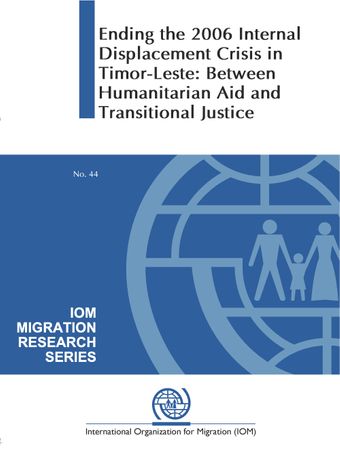Does the National Recovery Strategy amount to a reparations programme?

- Author: Peter Van der Auweraert
- Main Title: Ending the 2006 Internal Displacement Crisis in Timor-Leste , pp 37-42
- Publication Date: December 2012
- DOI: https://doi.org/10.18356/47a60426-en
- Language: English
The NRS can undoubtedly be described as a humanitarian or post-crisis policy that was successful in ending internal displacement in Timor-Leste. Indeed, today there are no indications that former IDPs continue to have significant vulnerabilities that are different from those affecting the general population and directly related to their earlier predicament. While this could be the topic of a separate article, the situation of (former) IDPs in Timor-Leste today arguably no longer differs from that of the general population, when measured against the eight criteria laid down by the IASC Framework on Durable Solutions for Internally Displaced Persons. Surveys undertaken by IOM underscore this empirically, finding no notable differences between the situation of IDPs and communities in terms of access to basic services, such as water, education and health, and levels of unemployment. The question that will be addressed in this final part of the article is whether the NRS, in addition to being a successful policy to end displacement, can also be considered a “reparations programme” for IDPs in Timor-Leste and, as such, an integral component of transitional justice policy in respect of the 2006 crisis.
© United Nations
ISBN (PDF):
9789210559188
Book DOI:
https://doi.org/10.18356/2891f2fb-en
Related Subject(s):
Migration
Sustainable Development Goals:
Countries:
Timor-Leste
-
From This Site
/content/books/9789210559188c008dcterms_title,dcterms_subject,pub_keyword-contentType:Journal -contentType:Contributor -contentType:Concept -contentType:Institution105
/content/books/9789210559188c008
dcterms_title,dcterms_subject,pub_keyword
-contentType:Journal -contentType:Contributor -contentType:Concept -contentType:Institution
10
5

